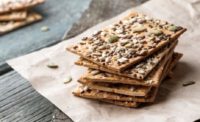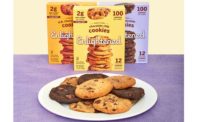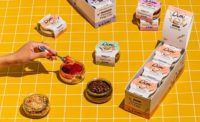Baked bars have been increasingly popular with consumers over the past several years. That trend continues to evolve as the world keeps working to move on from the effects of the pandemic—returning to work, taking vacations that have been on hold, and sending the kids back to school.
To dive deeper into the popularity of bars with consumers with busy lives and a growing interest in healthy eating, Snack Food & Wholesale Bakery checked in with Jose M. Coelho, president of Clextral USA.
Jenni Spinner: Could you please share your perspective of the evolution of the bars category? What types of products, ingredients, and even performance properties are consumers looking for?
Jose M. Coelho: We are seeing the continuing trend of consumers choosing bars as healthy between-meal snacks. Nutritional content is a key factor, with consumers looking for high protein and fiber content, and low sugar and saturated fat. Keto, gluten-free and vegan bars are also in demand.
As far as ingredients, most consumers are willing to try new ingredients for better nutrition as long as the flavor and texture are equivalent to traditional bars. Ancient grains, including quinoa, millet, amaranth and spelt, are becoming more popular for their high levels of protein, fiber, omega-3 fatty acids, vitamins, and minerals. Pulses such as chickpeas, lentils, beans and peas a similar nutrition boost with their high levels of fiber and protein, low glycemic index, and good (mono and polyunsaturated) fats. We expect to see even more of these ingredients utilized as the bar category continues to evolve.
Depending on their lifestyles, consumers are looking for different performance properties. Athletes need calorically dense bars with a combination of fast acting glucose and complex carbohydrates, plus protein for muscle repair. Diabetics need high protein and fiber, high-glycemic index carbohydrates, and minimal sugar. Consumers also eat energy bars to overcome mid-afternoon slump, and favor caffeine components from coffee, green tea, and chocolate.
JS: How have such changes in snack bars impacted the way such products are produced?
JC: As our expertise is extrusion, our work in bars is two-pronged. Our twin screw extruders process extruded bars, often with fillings and/or enrobed post-extrusion. Secondly, our extruders process inclusions that are incorporated into formed bars. Regardless the product, whenever you substitute an ingredient, for example, a high protein flour for a traditional flour such as corn, wheat, rice, potato or oat, there will be a difference in taste and texture. For example, most high protein grains and pulses offer lower levels of expansion, resulting in denser or crunchier textures. We can alleviate this by adding a lesser amount of starchy secondary ingredient (corn or rice) or by modifying the processing conditions. This is where the flexibility of the extruder offers a valuable processing component. On the extruder, recipe and process parameters can be extensively adjusted during product development and testing to achieve the desired product profile. In our test centers, we play out different scenarios with customers to discover and fine-tune new product characteristics.
Snack bar manufacturers are looking to interest consumers with new flavor combinations, different textures, differentiated nutrition, and clean labels with limited ingredients. When they come to us, our discussions center around the product(s) they are looking to develop. We offer our expertise in novel ingredients and extrusion processing to help them determine the best combination of ingredients and process parameters to reach their product goals.
JS: Please tell us about Clextral’s Co-Extrusion technology—how does it work, how does it specifically help snack producers improve their bar production, and how might it improve upon other technologies and equipment out there?
JC: Clextral’s co-extrusion systems make snack bars or even small size snacks bites with a soft filling tucked inside a crunchy cereal shell for bars with a dual-textured mouthfeel. Different types of sweet and salty fillings are used, such as chocolate, nut butter, jelly, fruit paste, honey, yogurt, cheese, and meat, for a full range of snack varieties. The cereal shell is cooked in the extruder and the soft filling mixed in a separate vessel and inserted at the coextrusion die in a continuous process.
The systems include mixing tanks, pumps, meters and injection ports. Our specialized dies make it possible to produce a variety of thicknesses and shapes in a range of sizes and textures. Two functions are combined in the former/cutter: shaping of the co-extruded bars after they exit the extruder and cutting them with a high degree of accuracy. Post-extrusion processing options include drying, toasting, coating and enrobing. The co-extrusion modules can be easily fitted to an existing extrusion line, providing a way for processors to add new products without a large capital investment.
JS: What other types of snack and bakery products is the tech suitable for?
JC: Extrusion is widely used in the snack industry for processing a variety of snacks. Directly expanded (DX) snacks are the largest segment, complemented by multigrain extruded chips, filled snacks, flat bread snacks, bi-color and bi-flavor snacks. We help processors develop and manufacture innovative snacks that entice consumers and we offer complete processing lines.
JS: Do you have any other new or upcoming solutions SF&WB readers should know about?
JC: Clextral is debuting a line of plug-and-play extrusion kits with die technology for exciting new shapes, including segmented pea pods, smiley faces, twisted pillows, hearts, ovals and more. These kits can be retrofitted to existing production lines. Clextral also recently rolled out our high capacity Flex Lines that offer quick changeover to make a variety of snacks, sweet or savory, on one processing line.





